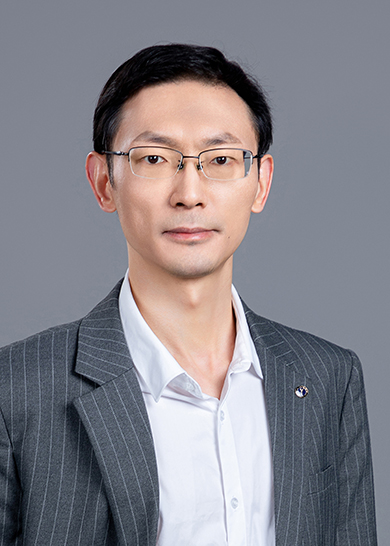


2017.3- present Guangzhou Institutes of Biomedicine and Health PI
2015.4-2017.3 Yale University, Yale Stem Cell Center Associated Research Scientist
2012.6-2015.4 The University of North Carolina-Chapel Hill, Postdoctoral Associate
2010.7-2012.6 Guangzhou Institutes of Biomedicine and Health, Research Scientist
2006.9-2010.7 Guangzhou Institutes of Biomedicine and Health, Ph.D student
2002.7-2005.9 NanKai University, Master Student
1998.7-2002.9 Yangtze University, Bachelor Student
Our research focuses on aging biology, aging-related diseases, and tissue regeneration. Previous research has uncovered distinct factors that can trigger senescence, such as telomere erosion, DNA damage, mitochondrial dysfunction, epigenetic alterations, and loss of proteostasis. Cell senescence causes tissue dysfunction and degeneration. One of the questions we are interested in is how to improve genome integrity. To this end, we perform whole-genome-wide screening to identify new proteins or factors involved in maintaining genome integrity. It is possible that manipulating these factors may delay senescence and aging.
It is recognized that the decline of autophagy leads to the collapse of proteostasis, characterized by the accumulation of misfolded proteins. It remains largely unknown whether upstream signaling pathways or factors result in the increased production of aggregated proteins during aging and senescence. We discovered that tRNA methylation, specifically m7G modification, plays an important role in regulating proteome homeostasis and senescence.
1. Fu, Y., F. Jiang, X. Zhang, Y. Pan, R. Xu, X. Liang, X. Wu, X. Li, K. Lin, R. Shi, X. Zhang, D. Ferrandon, J. Liu, D. Pei, J. Wang and T. Wang (2024). "Perturbation of METTL1-mediated tRNA N(7)- methylguanosine modification induces senescence and aging." Nat Commun 15(1): 5713.
2.Wu, T.P., T. Wang, M.G. Seetin, Y. Lai, S. Zhu, K. Lin, Y. Liu, S.D. Byrum, S.G. Mackintosh, M. Zhong, A. Tackett, G. Wang, L.S. Hon, G. Fang, J.A. Swenberg, and A.Z. Xiao. DNA methylation on N(6)-adenine in mammalian embryonic stem cells. Nature. 2016. 532:329-333.
3.Esteban, M.A. *, Wang, T. *, Qin, B. *, Yang, J., Qin, D., Cai, J., Li, W., Weng, Z., Chen, J., Ni, S., Chen, K., Li, Y., Liu, X., Xu, J., Zhang, S., Li, F., He, W., Labuda, K., Song, Y., Peterbauer, A., Wolbank, S., Redl, H., Zhong, M., Cai, D., Zeng, L., and Pei, D. Vitamin C enhances the generation of mouse and human induced pluripotent stem cells. Cell Stem Cell, 2010. 6(1): 71-79. (*Contributed equally)
4.Wang, T., Chen, K., Zeng, X., Yang, J., Wu, Y., Shi, X., Qin, B., Zeng, L., Esteban, M.A., Pan, G., and Pei, D. The histone demethylases Jhdm1a/1b enhance somatic cell reprogramming in a vitamin-C-dependent manner. Cell Stem Cell, 2011. 9(6): 575-587.
5.Chen, J., Liu, H., Liu, J., Qi, J., Wei, B., Yang, J., Liang, H., Chen, Y., Wu, Y., Guo, L., Zhu, J., Zhao, X., Peng, T., Zhang, Y., Chen, S., Li, X., Li, D.,Wang, T., and Pei, D. H3K9 methylation is a barrier during somatic cell reprogramming into iPSCs.Nat Genet, 2013.45(1): 34-42.
6.Qin, D., Gan, Y., Shao, K., Wang, H., Li, W., Wang, T., He, W., Xu, J., Zhang, Y., Kou, Z., Zeng, L., Sheng, G., Esteban, M.A., Gao, S., and Pei, D. Mouse meningiocytes express Sox2 and yield high efficiency of chimeras after nuclear reprogramming with exogenous factors. J Biol Chem, 2008. 283(48): 33730-33735.
7.Zhang, X., Zhang, J.,Wang, T., Esteban, M.A., and Pei, D. Esrrb activates Oct4 transcription and sustains self-renewal and pluripotency in embryonic stem cells.J Biol Chem, 2008.283(51): 35825-35833.
8.Pan, G.,Wang, T., Yao, H., and Pei, D. Somatic cell reprogramming for regenerative medicine: SCNT vs. iPS cells.Bioessays, 2012.34(6): 472-476.

